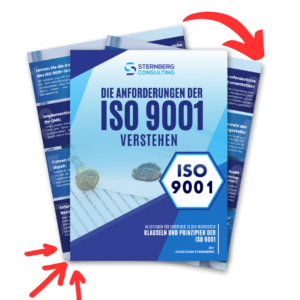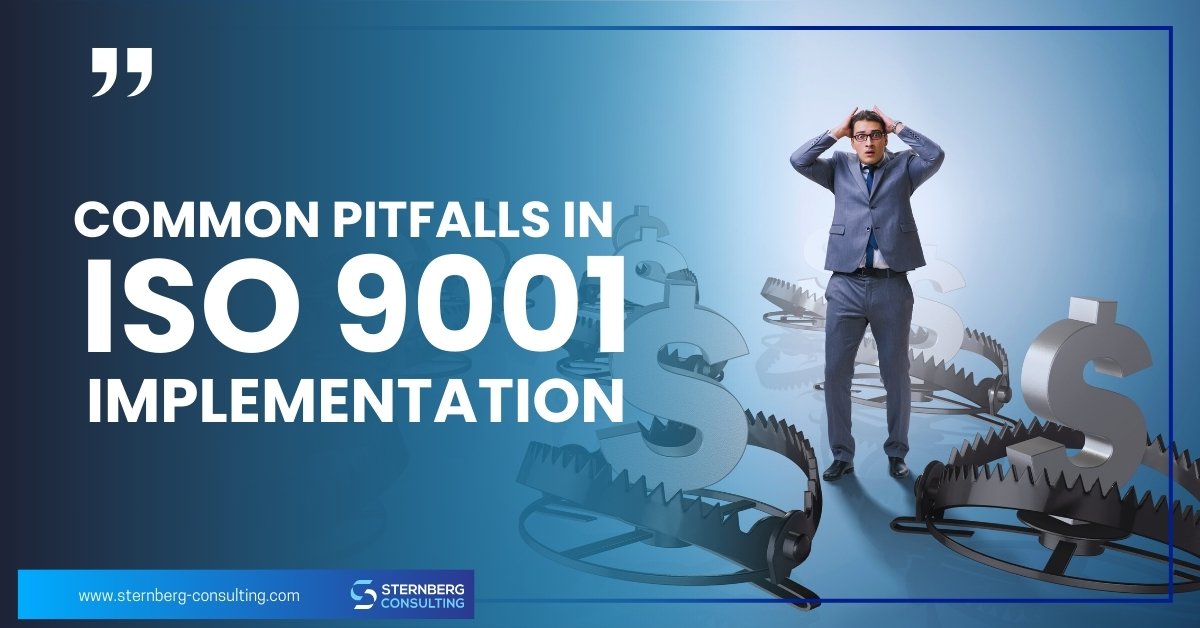
Requirements of ISO 9001:2015 Chapter 4
Requirements of ISO 9001:2015 Chapter 4 – Context of the organization
Introduction
Chapter 4 – Context of the organization of DIN EN ISO 9001:2015 lays the foundation for an effective quality management system by encouraging organizations to understand the context in which they operate. This clause aims to ensure that organizations systematically identify and consider the internal and external factors, the requirements of interested parties and the scope of their QM system. Why is this so important? Only if an organization understands what influences affect it, what expectations are placed on it and what exactly its QM system should cover, can it tailor it to its specific situation. This makes the QM system an effective tool for ensuring the quality of products and services, achieving customer satisfaction and competing in a dynamic environment. This blog post explains in detail what Chapter 4 of ISO 9001:2015 requires of organizations and how the requirements can be implemented in practice. We address the following aspects:
- Understanding the organization and its context
- Understanding the requirements and expectations of interested parties
- Defining the scope of the quality management system
- Quality management system and its processes
Read on to find out how a solid understanding of your organizational context can lay the foundations for a powerful QM system that will reliably lead your company to success. We will also describe practical implementation options.
Standards chapter 4.1: Understanding the organization and its context

Summary
According to chapter 4.1 of ISO 9001:2015, an organization shall determine the internal and external issues that are relevant to its purpose and strategic direction and that affect its ability to achieve the intended results of its quality management system.
What does that mean in concrete terms?
Organisations must systematically analyse which factors from their environment can have an influence on the QM system. These include, for example:
- Internal topics such as corporate culture, values, knowledge and performance of the organization
- External topics such as legal, technological, competitive, market-related, cultural, social and economic framework conditions
These topics can be relevant at international, national, regional or local level. The organization must gain a clear understanding of what influences its purpose and strategic direction.
How can this be implemented in practice?
There are various established methods for analyzing the context of an organisation. Two frequently used approaches are the SWOT and PESTEL analyses:
- SWOT analysis: This involves identifying and assessing the organization’s strengths, weaknesses, opportunities and threats. This helps to understand internal and external influencing factors.
- PESTEL analysis: This method analyses the political, economic, social, technological, environmental and legal framework conditions. It is particularly suitable for analysing the external environment.
It is important that the findings from the context analysis are incorporated into the QM system. The organization should align its strategy, goals and processes accordingly. It also makes sense to regularly review the context to be able to react to changes.a well-understood organizational context forms the basis for a QM system that is optimally tailored to the individual circumstances and challenges of the company. Only then can it develop its full effectiveness and contribute to the success of the organization.
Standards chapter 4.2: Understanding the requirements and expectations of interested parties

Summary
According to chapter 4.2 of DIN EN ISO 9001:2015, an organisation must determine the interested parties that are relevant to its quality management system and their requirements for the QM system.
What does that mean in concrete terms?
Interested parties are all persons or organizations that are affected by or can influence the activities, products or services of a company. These include, for example:
| Interested party | Interests of the parties |
|---|---|
| Customers and end consumers | Product quality and safety |
| Owners and investors | Sustainable profitability, transparency and information |
| Employees | Good working conditions, job security, recognition and remuneration |
| Suppliers and partners | On-time delivery and delivery capability |
| Society and the public | Environmental protection and social responsibility, |
| Authorities and regulatory bodies | Compliance with laws and standards |
Organizations must systematically determine who their interested parties are and what expectations and requirements they have of the QM system.
How can this be implemented in practice?
To understand the needs and expectations of interested parties, organizations can use various methods, such as
- Stakeholder analysis: This involves identifying all relevant interested parties and assessing their interests, influences and relationships with the organisation.
- Surveys and feedback systems: Expectations can be raised directly through customer surveys, supplier meetings or employee surveys.
- Evaluation of information sources: Customer complaints, market analyses, laws or media reports also provide information about the requirements of interested parties.
The standard does not require written documentation of this requirement. Only that the company management takes these issues into account. Of course, these can also be documented. The requirements identified should be incorporated into the planning and implementation of the QM system, for example when defining quality objectives, processes and resources. By understanding and taking into account the requirements and expectations of interested parties, an organization ensures that its QM system is not only effective and relevant internally, but also externally. This enables it to gain the trust of its stakeholders and build long-term relationships – an important basis for sustainable success.
Standard chapter 4.3: Defining the scope of the quality management system

Summary
According to chapter 4.3 of DIN EN ISO 9001:2015, an organisation must define and document the scope of its quality management system (QMS). The internal and external issues identified in sections 4.1 and 4.2 and the requirements of interested parties must be taken into account.
What does that mean in concrete terms?
The scope of application defines the limits and applicability of the QM system. It determines which products, services, locations and departments are covered by the QM system and which are not. Organizations must take the following into account:
- The scope of application must be aligned with the context of the organisation (section 4.1) and the requirements of interested parties (section 4.2).
- It must take into account the organization’s ability or responsibility to meet the requirements of interested parties and applicable legal and regulatory requirements.
- All requirements of ISO 9001:2015 must be applied insofar as they are relevant to the defined scope of application.
Clearly defining the scope of application is important in order to define the focus and boundaries of the QM system and avoid misunderstandings.
How can this be implemented in practice?
Organisations can define and document the scope of their QM system as follows:
- Analysis of the organizational context: Consider the internal and external issues identified in chapter 4.1 that are relevant to your QM system.
- Involvement of interested parties: Include the requirements and expectations of interested parties identified in chapter 4.2.
- Definition of the area of application: Determine which products, services, locations and departments are covered by the QM system.Definition of the area of application: Determine which products, services, locations and departments are covered by the QM system. Consider your ability to fulfil the identified requirements.
- Documentation: Document the defined area of application in your QM manual or another relevant document. Ensure that the application area is available and accessible to interested parties.
- Review and update: Review and update the scope regularly, especially if there are changes in the context of the organisation or in the requirements of interested parties.
A clearly defined and documented scope of application creates transparency and trust among interested parties. It helps the organisation to align its QM system in a targeted manner and ensure its effectiveness.
Standard chapter 4.4: Quality management system and its processes

Businesspeople planning on a glass wall
Summary
According to chapter 4.4 of ISO 9001:2015, an organisation must introduce, implement, maintain and continuously improve a quality management system (QMS). This includes defining the required processes and their interactions.
What does that mean in concrete terms?
A quality management system is a set of interrelated elements that serve to establish and achieve the quality policy and objectives of an organization. It includes structures, programs, procedures, processes and resources, and the organization must define the processes required for the QMS and their application throughout the organization. It should:
- determine the required inputs and expected results of these processes
- define the sequence and interaction of these processes
- Define criteria and methods to ensure the effective implementation and management of these processes
- ensure the necessary resources and information for these processes
- monitor, measure and analyse the processes
- Take measures to achieve planned results and continuously improve processes
By implementing these requirements, the organisation ensures that its QMS functions as a coherent system and is continuously improved.
How can this be implemented in practice?
To establish and manage an effective QMS, organisations can take the following steps:
- Identify the core processes: Determine the main processes required to deliver your products or services, such as product development, production, sales and customer service.
- Define the process sequence and interactions: Define how the processes are interrelated and influence each other. Flow charts or process landscape maps are helpful here.
- Definition of process criteria and methods: Define performance indicators, target values and control methods for each process to control and monitor its effectiveness.
- Allocation of resources and responsibilities: Ensure that each process is equipped with the necessary resources (personnel, equipment, information) and that clear responsibilities are defined.
- Monitoring, measurement and analysis: Collect and analyze data on process performance regularly to detect problems and identify potential for improvement.
- Continuous improvement: Implement the knowledge gained to continuously optimize processes and adapt them to changing requirements.
By systematically applying the process approach, an organization can set up and manage its QMS as an integrated system. This ensures that all activities are harmonized and work together effectively to achieve quality targets and improve customer satisfaction.
Share this article
Written by : Jonathan
Inhalt:

Buchen Sie einen Beratungstermin
Buchen Sie einen Termin und besprechen Sie mit uns wie wir Sie bei der Zertifizierung oder andern QM-Themen unterstützen können
ISO 9001 – Leicht gemacht.
Erfahren Sie in unserem E-Book die Anforderungen der ISO 9001, die der Norm zugrundeliegenden Grundprinzipien, und den Zertifizierungsprozess
Latest articles
July 24, 2024
July 24, 2024





